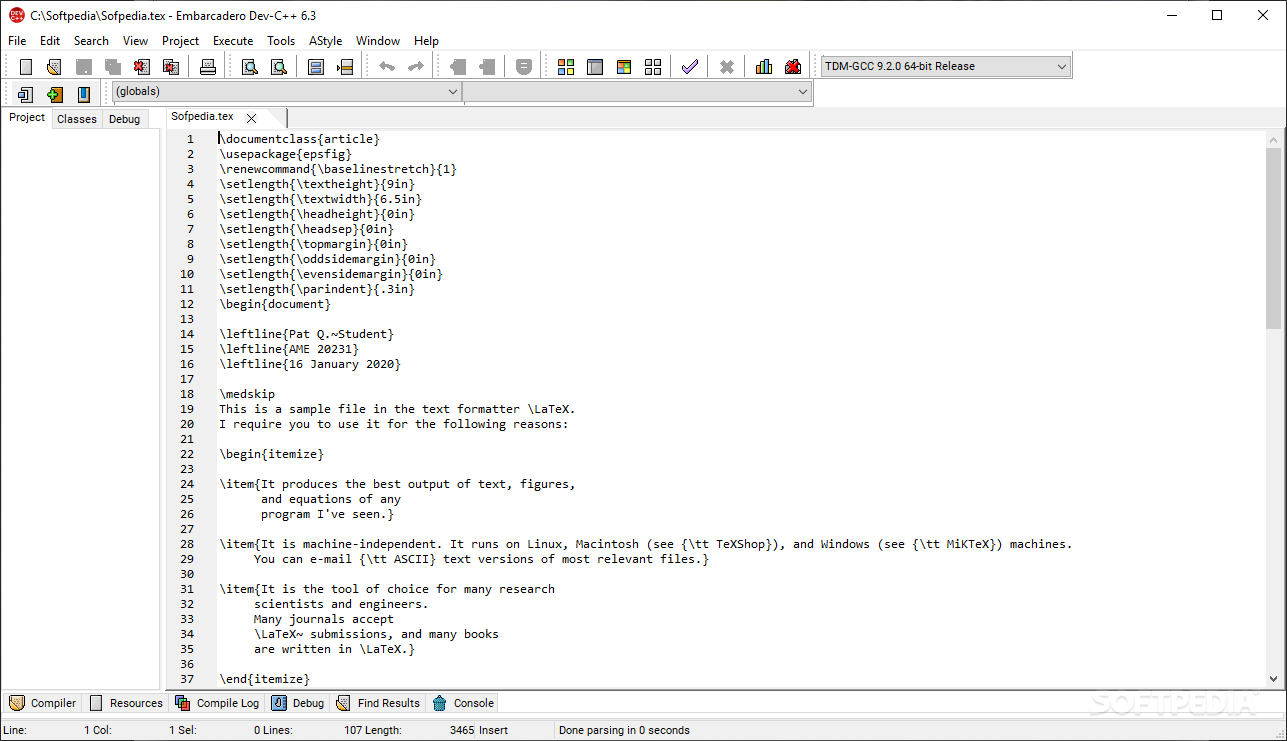Originally released by Bloodshed Software, but abandoned in 2006, it has recently been forked by Orwell, including a choice of more recent compilers. It can be downloaded from:
http://orwelldevcpp.blogspot.comInstallation
Run the downloaded executable file, and follow its instructions. The default options are fine.Support for C++11
By default, support for the most recent version of C++ is not enabled. It shall be explicitly enabled by going to:Tools -> Compiler OptionsHere, select the 'Settings' tab, and within it, the 'Code Generation' tab. There, in 'Language standard (-std)' select 'ISO C++ 11':
Ok that. You are now ready to compile C++11!
Compiling console applications
To compile and run simple console applications such as those used as examples in these tutorials it is enough with opening the file with Dev-C++ and hitF11.As an example, try:
File -> New -> Source File (or Ctrl+N)There, write the following:
Then:
File -> Save As... (or Ctrl+Alt+S)And save it with some file name with a
.cpp extension, such as example.cpp.Now, hitting
F11 should compile and run the program.If you get an error on the type of
x, the compiler does not understand the new meaning given to auto since C++11. Please, make sure you downloaded the latest version as linked above, and that you enabled the compiler options to compile C++11 as described above.Tutorial
You are now ready to begin the language tutorial: click here!.Dev-C is Free Software distributed under the GNU General Public License. This means you are free to distribute and modify Dev-C, unlike most Windows software!Be sure the read the license. Please support Dev-C by making a donation! The money will be shared between the active developers and the support manager in order to help us continue improving Dev-C from day to day.
- Install Dev-C. I installed from the Version 4.9.9.2 Setup File. Download graphics.h to the include/ subdirectory of the Dev-C directories. Download libbgi.a to the lib/ In order to use the WinBGIm subdirectory of the Dev-C directories. Whenever you #include in a program, you must instruct the linker to link in certain libraries.
- Jul 23, 2009 I have reinstall Dev C altogether now using the previous forum posts. And downloaded gsl 1.8 in the same folder as Dev C. At this point, I still have to find the exact directions of how to create a project and run a.cpp that allows me to access GNU math libraries.
Bloodshed Dev C++ Download
There are numerous compilers available for C++ programming. One of the easiest compilers to use is the Bloodshed Dev compiler. This page will give you the information necessary to help you make your first program with that compiler.You should already have downloaded Bloodshed Dev version 4.0. After you have installed the compiler, you should go to Start:Programs:Dev-C++ and run Dev-C++. You may be asked whether you wish Windows to associate .c and .cpp files with the compiler; you should check Yes. After the program opens, go to File-New Project...; click on it. Select Console Application, and click ok. Enter a project name when prompted; enter the filename for your project. Dev-C++ will conveniently open a new file for editing, and this file will already contain the barebones of a C++ program. Delete what is shown in that file and enter the following:To run this program, go to Execute-Run. You may be prompted to save your file; type a filename to save it. It will then execute the code you typed in. You probably won't see anything appear on the screen, although you might notice a brief flash of a DOS window. If you wish to force the compiler to leave that window open, go here. Keep in mind, when you create a finished program, you won't have a need to force the compiler to keep the window open, so you can remove the code to keep it open.

How do I make an executable file?

 With Dev-C++, to make an executable file is as simple as going to Execute-Compile. You might be prompted to save your file; save it. You will then find a .exe file with the same name as the .cpp file in your My Documents folder; this .exe file is the finished program that you have created.
With Dev-C++, to make an executable file is as simple as going to Execute-Compile. You might be prompted to save your file; save it. You will then find a .exe file with the same name as the .cpp file in your My Documents folder; this .exe file is the finished program that you have created.C++ Compiler Bloodshed
Bloodshed Dev C++ For Windows 7
Advertising | Privacy policy |Copyright © 2019 Cprogramming.com | Contact | About